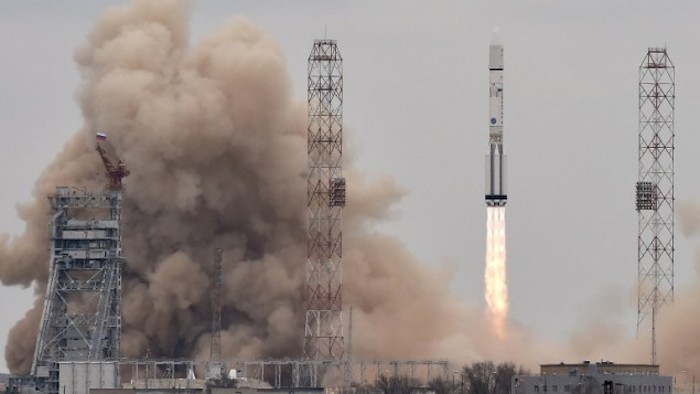.

Israeli rocket technology will help explorer ease onto MarsA braking system that will let the new European-Russian ExoMars craft touch down on Red Planet without exploding comes from the Rafael defense systems firm
Man’s latest attempt to search for life on the Red Planet has a critical blue-and-white component – a propulsion system that will gently guide the newly-launched ExoMars spacecraft to the surface of Mars when it gets ready to touch down sometime in 2018.
The craft’s propulsion system was developed by Rafael, the same company that developed, among other things, the Iron Dome missile defense system.
While known for its defense systems, Rafael is also active in the space business, specifically as the manufacturer of controllable propulsion and reaction control systems (RCS), which help “brake” the landing of satellites and missiles. This ensures that their fuel tanks do not crash into the ground as they land and ignite an explosion.
When ExoMars, launched Monday, gets to its destination, it will release a descent module called Schiaparelli which will land on Mars. During the descent phase, a heat shield will protect the payload from the severe heat flux. Parachutes, thrusters, and damping systems will reduce the speed, allowing a controlled landing on the surface of Mars.
The module’s fuel tanks are equipped with Rafael-supplied mini-rockets that will spring into action when the craft gets ready to land on the surface of Mars, according to Zvi Zuckerman, a Rafael engineer who helped develop the system. In comments to Yedioth Ahronoth, Zuckerman said that the landing “will be a dramatic moment, because if anything goes wrong, the spacecraft could explode” due to the impact of landing.
According to Zuckerman, the European Space Agency, which is sponsoring the mission along with Russian space agency Roscosmos, chose Rafael’s propulsion system for the job “because our propulsion tanks are lighter, and use cleaner fuel,” which ensures a smoother landing.
The inclusion of Israeli technology in the mission, Zuckerman added, was especially noteworthy as the ESA prefers to use only Europe-developed and manufactured systems for its missions. The Rafael tanks are manufactured at the Rafael facility in the Haifa suburb of Kiryat Yam.
ExoMars is far from Rafael’s first foray into space. The company’s propulsion modules have been used in dozens of satellites (30 of them currently active), among them the OFEQ, EROS and TecSAR satellites. The positive-expulsion propellant tank technology present on ExoMars has been used on Proteus, Galileo-GIOVE-B, Spirale, Prisma, Myriad/Astrosat-100 and other satellites, many of which were launched by the ESA.
The ESA is not the only space-exploring body to use Israeli technology. Last October, Israel signed a cooperation agreement with the United Nations Office for Outer Space Affairs (COPUOS). Under the agreement, Israel will develop protocols and systems to use satellite technology in a number of projects, including using satellites to take photos of areas where natural and other disasters take place, and the distribution of photos to rescue agents for use in locating and identifying survivors.
According to Minister of Science, Technology and Space Danny Danon, last year’s agreement was “a small step into the UN agency, and a big step for Israel. This agreement proves that Israel is a leader in space technology, and that it has a great deal to contribute to humanity in this area, especially in satellite development and research.”
Quelle: START-UP ISRAEL
4279 Views
